In today’s ever-evolving digital landscape, staying ahead with the latest SEO strategies is essential for businesses aiming to thrive online. With search engine algorithms constantly changing, having a comprehensive SEO checklist is key to optimizing your website effectively and ensuring it ranks high on Google.
This guide covers the latest best practices and actionable steps you can take to improve your site’s visibility, drive organic traffic, and increase conversions. From keyword research to technical SEO, OctopusWriters have got you covered with everything you need to succeed in 2024. Stay tuned and follow this article to discover the secrets of SEO success!
Introduction SEO checklist
Search Engine Optimization (SEO) is the process of enhancing a website’s visibility on search engines like Google, making it easier for users to find your content. In today’s competitive digital marketing landscape, SEO is crucial for businesses looking to increase organic traffic, build brand awareness, and improve their online presence.
This SEO checklist aims to provide a step-by-step guide to help you optimize your website, from keyword research to technical improvements. Whether you’re a seasoned marketer or just starting, this checklist ensures you’re following the best practices for maximizing visibility.
As we head into 2024, several emerging trends—like AI-driven content, Core Web Vitals, and the rise of voice search—are set to shape the SEO landscape. Following this guide will help you stay ahead and ensure your website remains optimized for future search engine change.

SEO checklist is very important in 2024
How to Use This SEO Checklist?
To help you navigate the essential SEO best practices, we’ve organized this SEO checklist into specific sections based on different focus areas:
- Basic SEO Practices Checklist
- Keyword Research Checklist
- Technical SEO Checklist
- Content & On-Page SEO Checklist
- Link Building & Off-Page SEO Checklist
For a well-rounded SEO strategy, we recommend paying attention to all these areas.
However, we understand that your priorities may vary based on your current needs and resources. Feel free to jump to the sections most relevant to you and return to this guide as you’re ready to advance to the next steps.
SEO Basics Checklist
Follow these tools and techniques to lay the foundation for SEO success:
Set Up Google Search Console
Google Search Console (GSC) is an incredibly powerful, free tool in your SEO checklist. It helps you monitor your site’s performance in Google Search. With GSC, you can:
- Identify which keywords bring the most traffic
- Submit sitemaps
- Fix website errors
- Check your Core Web Vitals scores (discussed later)
In short, setting up GSC is crucial for serious SEO efforts. For a detailed setup guide, check out our tutorial on Google Search Console.
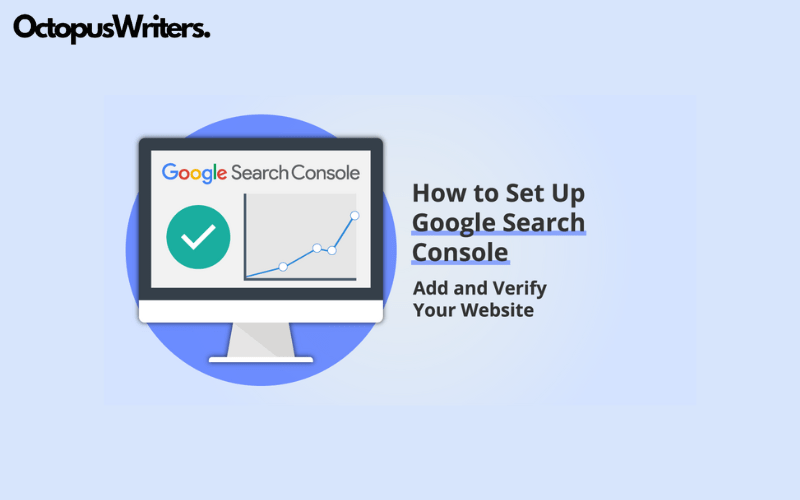
Basic SEO checklist that cannot be missed by Google Search Console
Install Bing Webmaster Tools
Next, add Bing Webmaster Tools (BWT) to your SEO checklist. Although Bing isn’t as popular as Google, it still has over 100 million daily users. Plus, SEO is all about data, and any additional insights from BWT can be beneficial.
Set Up Google Analytics
Google Analytics is essential for tracking how users find and interact with your website. It allows you to:
- Monitor traffic from Google
- Identify top-performing pages
- Track traffic trends over time
- Understand engagement metrics like page views and time on site
If you’re new to this tool, our guide on Google Analytics will help you get started.
Install Yoast SEO (for WordPress and Shopify)
Yoast SEO is a must-have plugin in your SEO checklist, offering an all-in-one solution for optimizing your website. Whether you’re on WordPress or Shopify, Yoast makes tasks like creating sitemaps and editing robots.txt easy, especially for beginners.
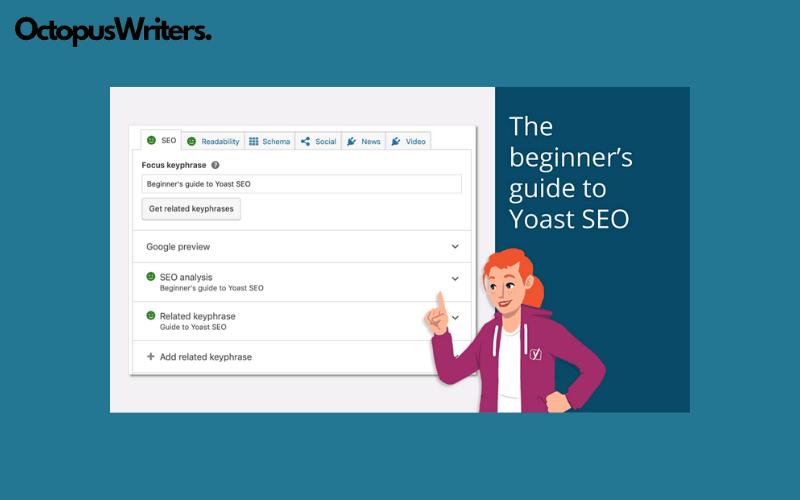
Yoast SEO is very helpful for beginners
Identify Your Project’s KPIs
In addition to setting up tools, you should clearly define your SEO goals. Key performance indicators (KPIs) to track include:
- Organic traffic: Increasing visitors from search results can lead to greater engagement and sales.
- Brand awareness: Boosting your visibility helps build trust with potential customers.
- Backlink growth: Securing quality backlinks increases your site’s authority and search rankings.
- Keyword rankings: Monitoring your keyword positions allows you to make timely adjustments.
For more detailed tracking, you can also monitor bounce rates, page load times, and sales to align your SEO efforts with business outcomes.
Set Up Rank Tracking
If one of your KPIs is keyword rankings, adding a rank tracker to your SEO checklist is essential. Many tools, like Semrush’s Map Rank Tracker, allow you to monitor both local and national rankings, ensuring that your SEO efforts are on the right track.
Get a Free Semrush Account
A free Semrush account is a powerful addition to your SEO checklist. It offers several key features:
- Competitor insights: Analyze competitors’ keywords, backlinks, and performance to gain a strategic edge.
- Site audits: Identify and fix technical SEO issues like broken links and slow page speeds.
- Backlink analysis: Evaluate your backlinks and remove harmful ones.
Even at the free level, Semrush equips you with valuable tools to kickstart your SEO strategy, and you can always upgrade for additional features later on.

Source: Semrush
Keyword Research Checklist
Keyword research is the foundation of any successful SEO strategy. In this SEO checklist, we’ll guide you through the steps to quickly find relevant keywords that your audience is actively searching for.
Identify Your Target Market
Before targeting the right keywords, it’s crucial to understand who your ideal customer is and what their search intent might be. Consider:
- Who your customer is: What is their profile? What kind of content are they consuming, and what language do they use?
- Their pain points: What challenges are they facing, and how can your product or service address those issues?
- Where they spend time: Are they using search engines or are they more active on social media platforms?
- What they search for: What terms or phrases are they using to find your products or services? This is a vital step in your SEO checklist to ensure your site aligns with their needs.
Discover Long-Tail Keywords with “Google Suggest”
One of the easiest ways to find long-tail keywords is by using Google Suggest. Simply type a keyword into Google’s search bar, and instead of hitting enter, observe the suggestions that Google provides. These suggestions are real queries from users, making them valuable additions to your keyword strategy. Integrating this into your SEO checklist can help uncover keywords your audience is actively searching for.
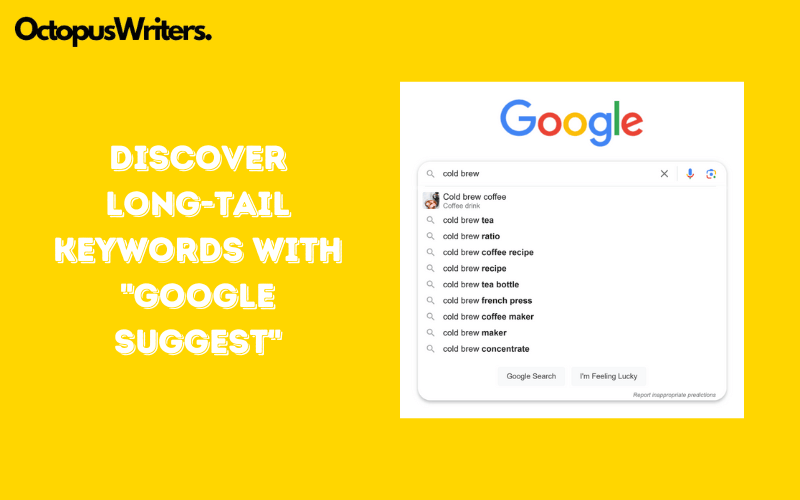
Source: Google
Find Keywords Using the Backlinko Keyword Tool
Keyword research tools are essential for discovering new terms, and Backlinko’s free tool is a great starting point. Enter a broad keyword related to your business, and the tool will generate a list of relevant keywords you can incorporate into your content.
Tap Into Online Communities
Platforms like Reddit, Quora, and other forums are treasure troves for discovering keywords and topics. Real people discuss their problems, which can be solved by your products or content. In your SEO checklist, include browsing sub-communities or using search operators like “how to” and “I wish” to find topic ideas and the keywords people use.
Identify Low Competition Keywords with Semrush
Using Semrush’s Keyword Magic Tool, you can find low-competition keywords that are easier to rank for. With this tool in your SEO checklist, you’ll gain access to data like search volume, keyword difficulty, and CPC, helping you prioritize the terms that will yield the best results for your site.
Find Question Keywords
Question-based keywords are excellent for blog content. Use tools like Answer The Public to identify common questions users search for, such as “How to make nut milk at home?” You can also use Semrush’s question filter in the Keyword Magic Tool to generate similar queries and add them to your SEO checklist.

Source: Semrush
That way, you can answer these questions with your content.
Conduct a Topical Authority Analysis
Topical authority measures how well you’re regarded as an expert on specific subjects. Use Google Search Console data to analyze the topics your site already ranks for and discover gaps where you could expand. By conducting a topical authority analysis as part of your SEO checklist, you can pinpoint areas to strengthen your content and boost your search rankings.
On-Page SEO Checklist
Now that you’ve got your content ready, it’s time to optimize it using some proven on-page SEO techniques. This section of the SEO checklist will walk you through each step.
Include Keywords in Your URL
Your URL plays a key role in helping Google understand the page’s topic. A keyword-rich URL can boost your organic click-through rate (CTR). For example, if your target keyword is “SEO checklist,” your URL should look something like this: yourwebsite.com/seo-checklist. Keeping it simple and keyword-focused is essential.
Keep URLs Short
Shorter URLs tend to perform better in Google’s rankings. In fact, an analysis of millions of search results showed that pages with concise URLs rank higher. Adding this to your SEO checklist will ensure your URLs remain clean and effective.
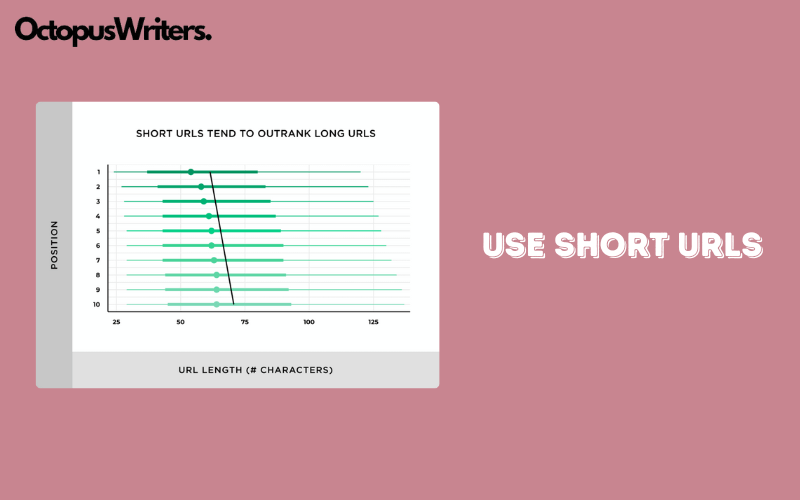
Using short URLs will help optimize your website.
Place Keywords at the Beginning of Title Tags
Using your target keyword in the title tag is standard practice. But positioning it at the front of the title tag can increase your chances of ranking higher. For example, if “SEO checklist” is your main keyword, place it at the start of your title for maximum impact.
Add Title Tag Modifiers
Enhance your title tag with modifiers like “best,” “top,” “guide,” or even the current year to attract more clicks. Modifiers make your content stand out, giving users more reasons to choose your link from the search results.
Use Keywords Early in Your Content
Including your target keyword within the first 150 words of your content is a solid SEO strategy. It helps both search engines and users quickly understand the page’s topic, reinforcing the relevance of your content right from the start.
Include Keywords in Headers (H1, H2, H3)
In this SEO checklist, make sure to add your main keywords into H1, H2, or H3 tags. These headers help Google and readers easily grasp the structure and main points of your content. For instance, including “SEO checklist” in a header tag can improve your chances of ranking higher for that keyword.
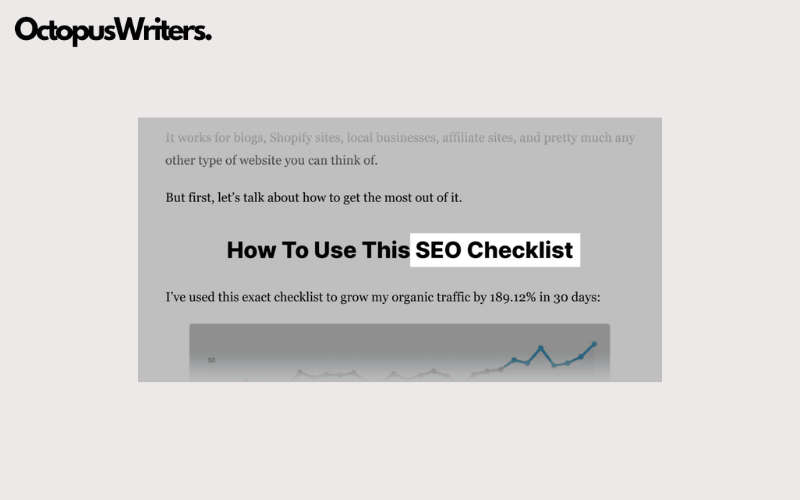
H1, H2, H3 should always contain the main keyword
Optimize Your Images
Search engines can’t interpret images the way humans do, so optimizing them is crucial. Ensure your image filenames describe the content, like seo_checklist_example.png, and use descriptive alt text. This optimization not only helps Google understand your content but also improves your chances of ranking in image search results.
Use Synonyms and LSI Keywords
Instead of repeating the same keyword, diversify by using synonyms and Latent Semantic Indexing (LSI) keywords. For example, if your primary keyword is “SEO checklist,” also incorporate phrases like “SEO guide,” “how to create an SEO checklist,” or “SEO strategy steps.” These variations help Google better comprehend your content without the risk of keyword stuffing.
Add External Links to Authoritative Sources
Linking to trustworthy external sources shows Google that your content is well-researched and reliable. For example, you might link to reputable websites or authoritative articles to back up your points. While it doesn’t directly impact rankings, it enhances user trust and improves the overall experience.
Use Internal Links
Every time you publish a new piece of content, link to other relevant pages on your site. This practice helps search engines crawl your site more effectively and strengthens the overall structure of your content. For example, linking to other parts of your SEO checklist will provide readers with more valuable information while boosting the SEO of your internal pages.
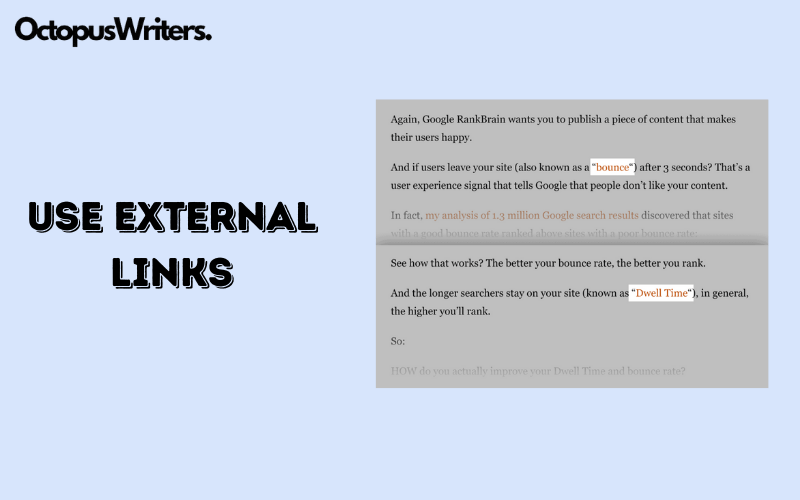
To make the article better, don’t forget to use external links
Content Creation SEO Checklist
To rank well on Google, publishing high-quality content is non-negotiable. This part of the SEO checklist provides essential steps to ensure your content is optimized and engaging.
Break Up Your Content for Better Readability
Large blocks of text can overwhelm readers and increase bounce rates. To avoid this, break your content into digestible sections, just like in this SEO checklist. This technique encourages readers to stay on the page longer and get the most value from your content.
Focus on Content Formats That Are Trending
The content landscape is constantly evolving, and staying updated with what’s currently popular is key. This SEO checklist recommends focusing on content types that resonate today, such as expert-written articles, original research, case studies, and evergreen content. These formats stand out amidst the rise of AI-generated, lower-quality content.

Don’t forget to check out the recent trends
Prioritize Information Gain
In-depth coverage of a topic is not enough anymore. To rank highly, your content must offer something unique beyond what the top-ranking pages already provide. This SEO checklist emphasizes the importance of delivering fresh insights and value, making your content more trustworthy and relevant to both Google and your readers.
Incorporate Multimedia
Multimedia like images, infographics, and videos play a crucial role in content engagement and ranking potential. This SEO checklist encourages the use of visuals to complement your writing and enhance user experience. Including charts, polls, or interactive elements can make your content more dynamic and shareable, improving its overall SEO performance.
Technical SEO Checklist
Technical SEO is crucial for your website’s rankings. Following this SEO checklist can help you address and resolve common issues effectively.
Detect Crawling and Indexing Issues
Crawling errors occur when Google or other search engines struggle to access a page on your website. If they can’t crawl your site, you won’t rank for any keywords. Indexing errors mean that while Google can find your content, it isn’t indexing it, which also affects rankings. Use Google Search Console’s “Indexing” report to spot these issues and fix them quickly if search engine crawlers are blocked, such as by robots.txt.
Check How Google Interprets Your Pages
Your users might see everything on your page, but if Google doesn’t, you could face ranking problems. This SEO checklist recommends using Google Search Console’s “Inspect URL” feature to see how Google views your page. Issues like indexing restrictions or incorrect canonical URLs must be fixed to ensure full visibility and ranking potential.
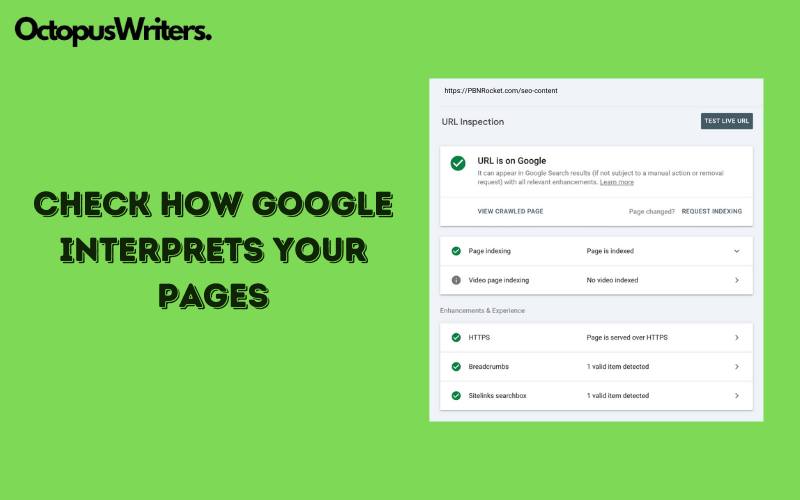
Source: Google
Ensure Your Site Is Mobile-Friendly
Google now uses mobile-first indexing, meaning your site must be optimized for mobile devices to rank well. According to this SEO checklist, you can achieve mobile optimization by applying responsive design, using concise sentences and paragraphs, and avoiding intrusive popups.
Fix Broken Links
Broken links damage both your SEO and user experience, so finding and fixing them is crucial. The easiest way is to use tools like DrLinkCheck.com, as outlined in this SEO checklist, to scan your website and resolve any broken links.
Secure Your Site with HTTPS
HTTPS is a confirmed Google ranking factor. As this SEO checklist advises, migrating your site to HTTPS, or setting up HTTPS from the start for new sites, is essential to improving security and rankings.
Test Your Site’s Loading Speed (Core Web Vitals)
Page speed is a direct ranking factor in Google’s algorithm. Use PageSpeed Insights to test your site’s loading speed for both desktop and mobile. This tool, highlighted in the SEO checklist, also checks if your site meets Core Web Vitals, which are essential metrics for site performance.
Implement Schema Markup
Schema markup (structured data) helps search engines better understand your site’s content and can lead to rich snippets like star ratings or recipe times. This SEO checklist recommends using structured data testing tools for easier implementation, as manual setup can be challenging.
Link Building Checklist
Link building is a crucial part of SEO. Google uses links to assess website quality and authority. Although building links can be challenging, it’s essential for ranking. Follow this SEO checklist to improve your link-building strategy.
Provide Expert Quotes to Media Outlets
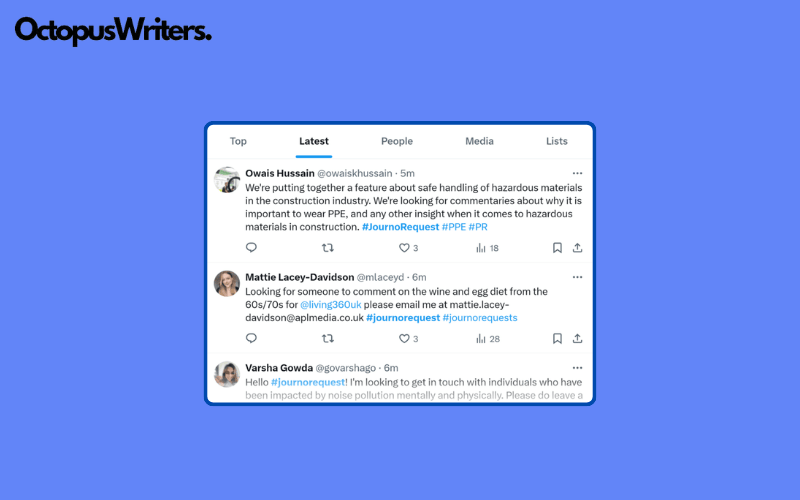
Try contacting the media
Media outlets, from blogs to major newspapers, are always in search of expert sources. By contributing expert quotes, you can earn backlinks to your website. Platforms like Connectively (formerly HARO) and Help a B2B Writer can connect you with journalists. Additionally, this SEO checklist suggests using social media hashtags like “#journorequest” in your niche to find these opportunities.
Create Linkable Assets for Journalists (Digital PR)
Another effective method from the SEO checklist is to create linkable assets, also known as digital PR or link bait. These are pieces of content journalists can easily reference, such as original research, insightful reports, or entertaining content. Such content attracts backlinks, as demonstrated by the success of linkable assets like our Google ranking factors list, which has gained thousands of backlinks due to its valuable data.
Analyze Competitors’ Backlink
Instead of starting from scratch, reverse engineer your competitors’ backlinks. This SEO checklist recommends using a link analysis tool like Semrush’s Backlink Analytics. By entering your competitor’s URL, you can identify and replicate the backlinks they’ve earned, giving you a head start in your link-building efforts.
Become a Podcast Guest
Just like guest posting, being a guest on podcasts in your industry can also help with link building. This SEO checklist highlights the value of podcasts not only for visibility but also for gaining backlinks. Look for relevant podcasts where you can share your expertise and promote your site at the same time.

Postcards are trending in 2024
Tracking & Additional SEO Checklist Steps
Now that you’ve gone through the main points of your SEO checklist, here are some additional tasks to help enhance your SEO efforts.
Set Up Rank Tracking for SEO
One of the first things to do for any SEO project is to set up rank tracking. It’s essential to monitor your website’s rankings for dozens or even hundreds of keywords. This part of the SEO checklist ensures you can see if your SEO strategies are improving your rankings.
![]()
Source: SERPWatcher
Tools I recommend for rank tracking include:
- SERPWatcher
- Ahrefs (though it may take longer to update rankings compared to SERPWatcher).
Set Up Link Monitoring
Link monitoring is crucial to track whether your content is earning backlinks and if your link-building campaigns are successful. This SEO checklist step involves using tools that crawl the web for new links to your site and alert you of any changes.
Tools I suggest for link monitoring include:
- Monitor Backlinks
- Ahrefs.
Claim Your Brand Name on Social Networks
A key point in your SEO checklist is reputation management. Claim your brand name on as many social networks as possible. Not only does this prevent others from using your brand name, but you can also dominate the search results for your brand if you’re a new company.
Set Up Bing Webmaster Tools
If your business operates in the US market, Bing should not be overlooked. Setting up Bing Webmaster Tools is a must on your SEO checklist, as it works similarly to Google Search Console but for Microsoft’s search engine.
Use an SEO Audit Tool
Conducting an SEO audit manually can be time-consuming, so utilizing SEO auditing tools is another crucial step on your SEO checklist. These tools help detect errors quickly, allowing you to focus on larger SEO strategies rather than fixing minor issues.
Use an SEO Audit Tool for Double-Checking
Conducting a manual SEO audit can be tedious and complicated. Luckily, SEO auditing tools can simplify the process and help spot errors quickly. This step in your SEO checklist will allow you to focus on higher-level SEO strategies rather than fixing minor issues like broken links.
Pro Tip: While these automated tools are helpful, they aren’t a replacement for a professional SEO. Be sure to review the recommendations with your own judgment.
Recommended tools:
- SEO audit tool
- Screaming Frog
- Ahrefs
- SEO audit and strategy templates.
Avoid Meta Keywords
Your SEO checklist should also include avoiding meta keywords, which have become obsolete. Some questionable SEO professionals may still suggest using them, but it’s important to know they won’t help your ranking and are a waste of time.

Those keywords will waste your time.
Check Cached Pages if Using a Pre-Owned Domain
If you’ve acquired a domain that was previously owned by someone else, part of your SEO checklist should involve checking its history. Use tools like Google’s cached pages to see if the content was relevant or outdated and irrelevant to your current site.
Earn Your SEO Certification
Building your credibility is an important item on your SEO checklist. Courses like ClickMinded offer SEO certification that demonstrates your expertise in search engine optimization. You’ll complete a final exam, and this certification can be integrated into LinkedIn to show potential employers or clients. While certifications don’t guarantee SEO skills, they provide a solid foundation and boost your portfolio. ClickMinded also offers digital marketing and social media marketing certifications.
Once you feel confident in your SEO abilities, use free templates to create SEO reports and showcase your results to clients or within your company. And if managing SEO on your own becomes too much, you can always seek help from a professional SEO agency.
Bonus: Advanced SEO Tips and Tactics
Once you’ve mastered the fundamentals, it’s time to explore some advanced SEO techniques to elevate your strategy.
Optimize Your Site for User Experience Signals
The role of user experience signals—like click-through rate and dwell time—in Google’s ranking algorithms has been debated for years. However, one thing is clear: enhancing your site to improve click-through rates can drive more traffic and boost conversions. The longer visitors stay on your site, the higher the chances of converting them into customers.
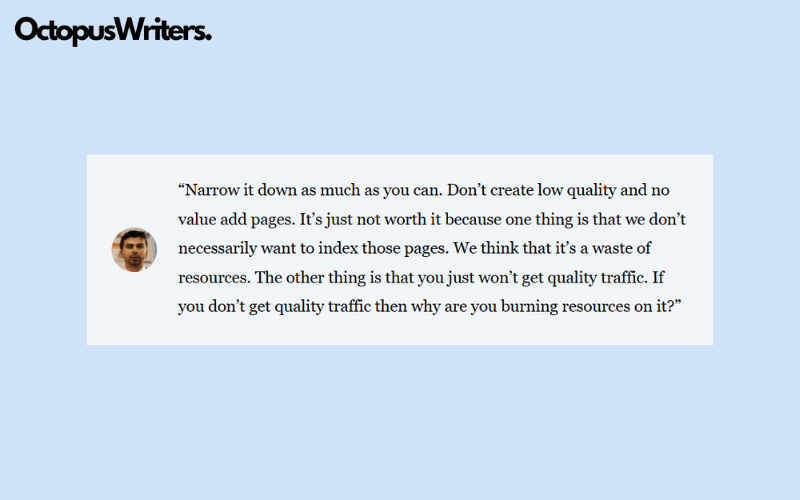
To quote the Google rep (Gary Illyes)
To enhance click-through rates, consider the following strategies:
- Craft compelling and relevant titles.
- Include an enticing hook in your meta descriptions.
- Utilize schema markup to target rich snippets.
- Optimize your content to appear in featured snippets.
- To encourage longer dwell time on your pages, focus on:
- Creating high-quality content that aligns with user intent.
- Using concise sentences and paragraphs to enhance readability.
- Incorporating engaging visuals to enrich your content.
Adding calls to action (CTAs), internal links, and user-friendly navigation to improve site accessibility.
Remove “Dead Weight” Pages
Google has indicated that a site filled with low-quality pages can negatively impact your SEO. This is why it’s essential to maintain high standards for every page on your site. Unfortunately, many sites struggle with “dead weight” pages, which can include:
- Empty WordPress category and tag pages
- Outdated blog posts
- Duplicate content
- Low-quality articles
- Unproductive eCommerce product pages
- Archive pages
- Thin or boilerplate content
- Old service pages
Since Google has pointed out that these low-quality pages can harm your SEO efforts, it’s advisable to remove them from your site as part of your SEO checklist.
Refresh and Relaunch Outdated Content
Do you have older blog posts that aren’t performing as well as you’d like? Consider revamping them. For instance, we recently updated and relaunched an SEO copywriting article by improving its formatting, enriching the content, and adding new visuals. This simple approach led to an astonishing 1,102.43% increase in search engine traffic to that page.
Try applying this tactic to your underperforming posts for quick and effective results on your SEO checklist.
SEO checklist – Frequently Asked Questions
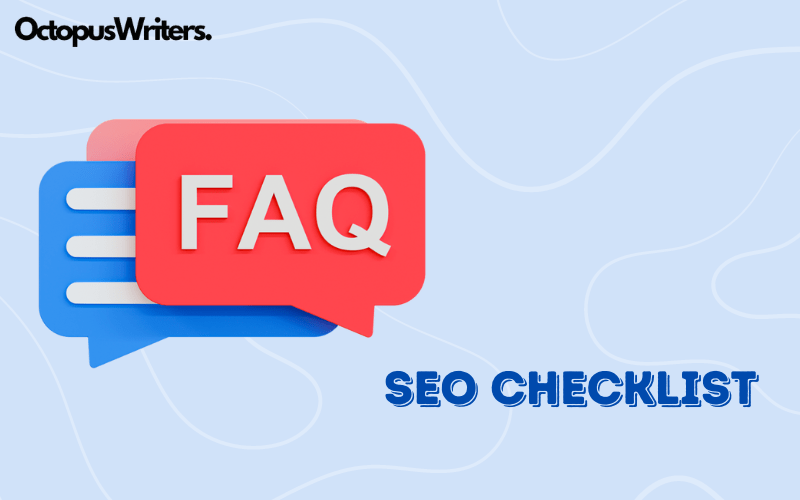
FAQs for SEO checklist
What is SEO, and why is it important?
SEO (Search Engine Optimization) is the process of optimizing your website to rank higher in search engine results pages (SERPs) like Google. It involves improving the website’s structure, content, and authority to attract organic traffic. SEO is important because it increases visibility, brings relevant traffic to your site, and can boost sales, brand awareness, and trust with users.
How long does it take to see results from your SEO checklist?
The timeline for seeing results from your SEO checklist varies based on factors like competition, industry, and the specific strategies implemented. Generally, it can take 3 to 6 months before you notice significant improvements in rankings and traffic. Remember, SEO is a long-term strategy that requires continuous effort to maintain and improve results over time.
What is the difference between on-page and off-page SEO in an SEO checklist?
On-page SEO in your SEO checklist includes optimization tactics applied directly to your website, such as improving content, meta tags, and internal linking. Off-page SEO refers to actions outside your site, like building backlinks, managing social media presence, and generating online mentions. Both are essential components of a complete SEO strategy.
How can I optimize my website speed for SEO?
Website speed is a ranking factor, and slow sites can harm user experience and SEO rankings. To optimize speed, use tools like Google PageSpeed Insights or GTMetrix to analyze your site. You can improve speed by compressing images, enabling browser caching, using a Content Delivery Network (CDN), and minimizing CSS, HTML, and JavaScript.
Is content length important for SEO?
Yes, content length can influence SEO, but it’s not about writing the longest content. Instead, focus on providing value. Longer content often performs well because it can cover a topic more comprehensively, leading to better user engagement and higher rankings. However, content should still be well-structured and relevant to user intent.
How often should I update my SEO strategy?
SEO is dynamic, and search engines constantly update their algorithms. Regularly monitor your website’s performance and stay updated with SEO trends. Generally, it’s good to revisit and update your SEO strategy every 6 to 12 months, or whenever there’s a significant change in search algorithms or user behavior.
Can I do SEO myself, or should I hire a professional?
You can certainly manage SEO yourself, especially if you have time to learn and implement the best practices. However, SEO can be complex and time-consuming, especially for larger websites or competitive industries. Hiring an SEO professional or agency can help ensure your strategies are well-executed and aligned with industry best practices.
What are Google Core Web Vitals, and how do they impact SEO?
Google Core Web Vitals are a set of metrics that measure the user experience on your website, including loading speed, interactivity, and visual stability. They are essential for SEO because Google considers them as ranking factors. Improving your Core Web Vitals ensures a better user experience and can lead to higher rankings.
What is keyword cannibalization, and how do I avoid it?
Keyword cannibalization occurs when multiple pages on your website compete for the same keyword, leading to confusion for search engines and potentially lowering the rankings of all pages involved. To avoid it, make sure each page targets unique keywords or phrases, and regularly audit your site to ensure content is well-structured.
How do backlinks affect my SEO rankings?
Backlinks, or links from other websites to your site, are an essential off-page SEO factor. High-quality, relevant backlinks signal to search engines that your site is trustworthy and authoritative, helping to improve your rankings. However, poor-quality or spammy backlinks can have the opposite effect and harm your SEO performance.
In Conclusion
By following this comprehensive SEO checklist, you’ll be well on your way to achieving top rankings and driving more organic traffic to your website. Remember, SEO is an ongoing process, so it’s important to regularly review and update your strategy. Want to dive deeper into SEO and learn more advanced techniques? Check out our other resources or contact the OctopusWriters team for personalized assistance.

